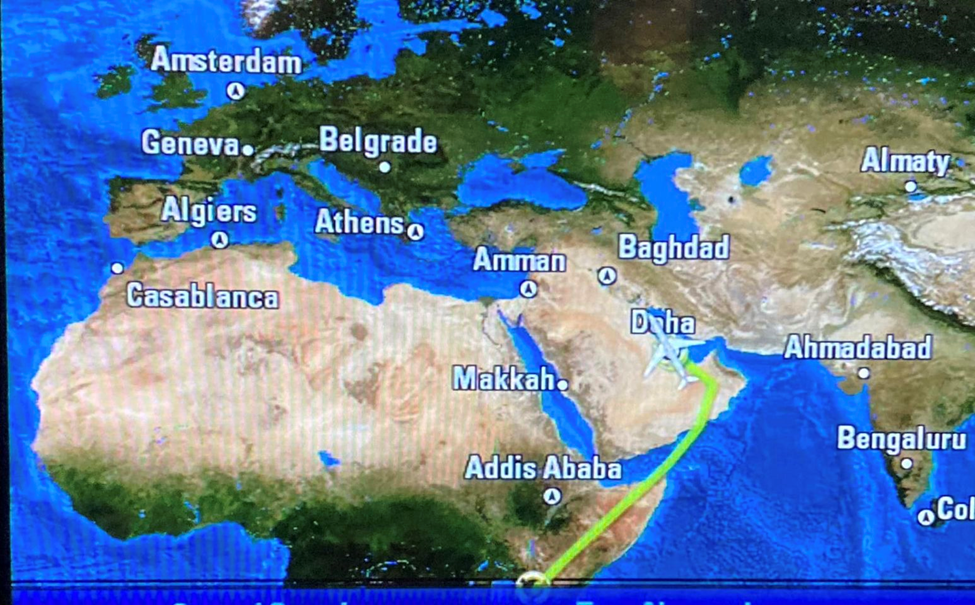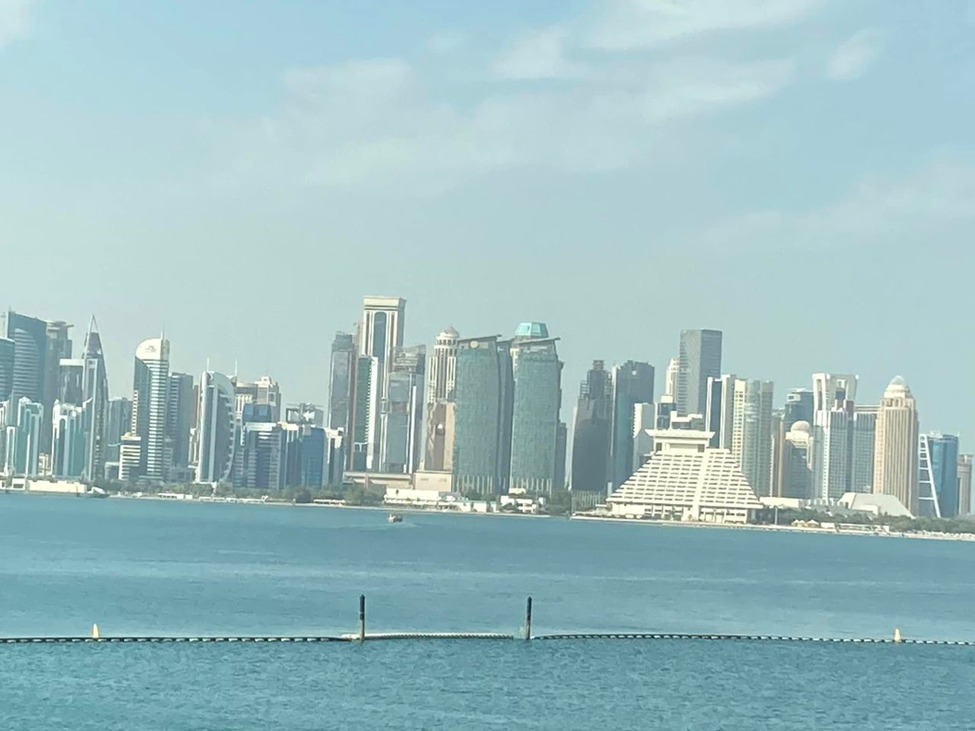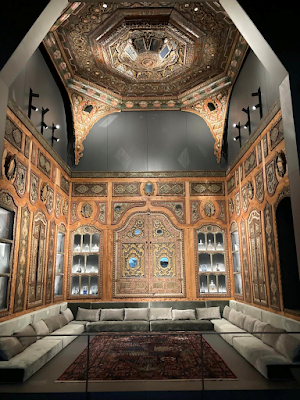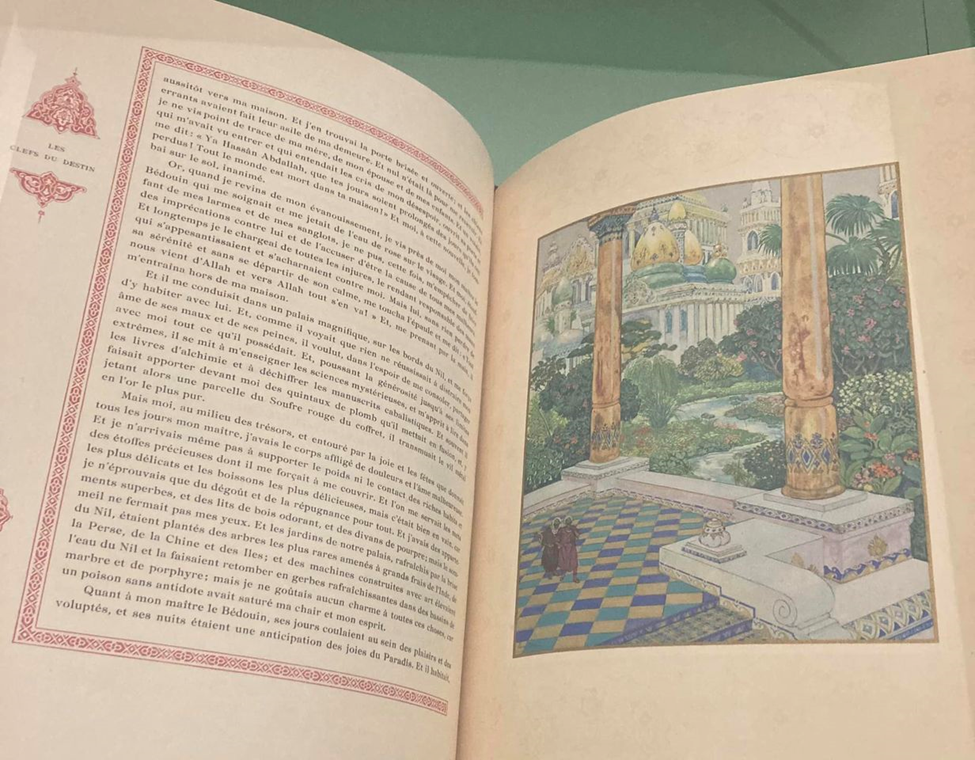Visit to Doha, February 2023
The flight from Nairobi to Doha, Qatar, was a little more than five hours. Service was great on Qatar Airlines , and that made the flight go fast.
Landing a bit before midnight on January 31, the Qatar airport was easy to navigate and another really beautiful piece of infrastructure. (I think if you have a lot of oil money, you can do a lot. ) My hotel, The Torch, is one of the longtime landmarks of Doha.
This morning, in the breakfast area of the Flying Carpet dining room, it’s easy to remember that just recently the soccer World Cup was played here, because there seem to be a couple fellows from the Brazilian team still hanging around and enjoying the breakfast buffet.
February 1, 2023 in Doha, Qatar.
Uber operates seamlessly here, cars are modern immaculate and inexpensive AND they drive on the right side of the road! (16 days in East Africa, which uses the British system, almost made me forget the USA system). So that’s how I got to the Museum of Islamic Art this morning, passing several FIFA WORLD CUP promotions that are still evident around Doha.
I have been to this museum before, several years ago, and it is undoubtedly one of the best-curated, visitor-friendly, museums I have ever experienced.
So what’s going to follow now will be a series of in-depth posts about the wonderful exhibition they have on Baghdad. (Commentary from signs in the exhibition, which are written both in Arabic and English ). I read about this exhibition in the magazine that I get for free from Saudi Aramco, called Saudi Aramco World. You can subscribe to it; find it on Google, and it’s a great insight to the contributions of Islamic culture around the world. Also, there’s a great recipe in every issue!
The
Katah bridge over the Tigris river( Iraq Baghdad, 1932) ~ exhibition
commentary: No other city in the Islamic
world continues to inspire and evoke more powerful images in Baghdad. For
nearly five centuries, Baghdad was the most important commercial, cultural and
cosmopolitan city in the world. Founded in 762 as the new capital of the
Abbasids ( 750–1258), the third Islamic caliphate to succeed the Prophet
Muhammad, the city quickly became the most splendid capital city of one of the
largest Muslim empires, which at its height stretched from the Atlantic Ocean
to Central Asia. Although Baghdad was destroyed by the Mongols in 1258, thereby
ending Abbasid rule, it continued to thrive as an important city in the
following centuries. Baghdad was the largest city in the world for much of the
Abbasid era. This exhibition presents Baghdad’s legacy to the world. (For
example, in 794 the first paper mill started operating in Baghdad, and in 820,
a first astronomical observatory was established in Baghdad. Marco Polo wrote
about 1290, and the famous Islamic explorer Ibn Battutu first visited Baghdad
in 1327. The first café was established in 1590… and it was not a Starbucks.
Oil was discovered in Kirkuk Iraq in 1927). Baghdad was ruled by many groups,
including the Mongols, the Timurids, the Turkmens, the Safavids, the Ottomans,
and finally the British. The Iraqis revolted against the British in 1920. In
1958 the Hashemite kingdom of Iraq was established, with Baghdad as its
capital. Today, Baghdad continues as the capital of the Republic of Iraq. This
exhibition celebrates the Golden Age under the Abbasids, but also its
accomplishments in the 20th century.
Mutanabni Street, Baghdad, is named after the classical poet Al-Mutanabni (915-965), this celebrated bookseller’s street represents the soul of Baghdad’s intellectual community. The Abbasid caliphs were great supporters of scholarship. Through their patronage, Baghdad became the intellectual powerhouse of its time. Famous learning institutions and libraries were founded there, attracting students and scholars from across the Islamic world. The rise of a written scholarly culture contributed to the formation of a new class of skilled calligraphers, aided by the introduction of paper from China and the adoption of a more legible style of writing in Arabic, called naskh. A growing market for books also emerged with educated readers, finding in Abbasid Baghdad their ideal destination.
A thirst for knowledge: At the height of Abbasid rule, Baghdad was a hive of intellectual activity. Ancient pre-Islamic texts in languages such as Greek, Pahlavi and Sanskrit were collected and translated into Arabic. Such a thirst for knowledge was supported by Baghdad’s diverse, educated and intellectually curious society, from the Caliphal court to private individuals with financial means. This collective scholarly effort resulted in original discoveries in several scientific fields. These Arabic texts were later translated into Latin and other European languages, as seen in some examples in the exhibition, contributing to advancing scientific knowledge in medieval and renaissance Europe.
There was a display of Tiraz fragments. Baghdad was renowned for luxurious textiles made in state–sponsored workshops during the Abbasid Period. Known as tiraz, these textiles for usually inscribed with the ruler’s names, and often presented as diplomatic gifts.
For the map freaks among us, a series of maps: first, the plan of walled city of Baghdad, 1630.
Second, a view of Baghdad, showing the city walls, and the Tigris River, 1636.
Lastly, the city of Baghdad after its conquest by Sultan Murad IV in 1623, folio from a manuscript done in 1591.
And, of course, an Ortelius, from
1570, a description of the Turkish empire showing Baghdad and Basra in the
Ottoman Period.
February 1 - time for tea at the museum’s cafe. The museum has beautiful views toward the skyscraper skyline of downtown Doha.
And in case you are interested, I chose that pink strawberry thing on the upper right of the cake case… So much easier to eat it with a fork, than spread it directly on my thighs, but the final effect will be the same.
February 1, my afternoon excursion -to the Firehouse museum complex
It featured an exhibition called “the Al Jazeera experience”. You probably know that Al Jazeera is a news network. Per exhibition signage, the Arabic name Al Jazeera can be translated as “island“ or “peninsula“. It carries the symbolic meaning of an “island of independent journalism“ in a region, which historically was not known for media freedom. Al Jazeera slogan “opinion and the other opinion” reflects its adherence to the core journalistic principle of conveying all sides of the story to deliver comprehensive perspectives to its audiences. My takeaway: It is quite an exhibition, with lots of screens and old newscast recordings going on at the same time, evocative of what a real news operation is like, with all of the auditory and visual input. Then I got to pose in one of the studios, and that was quite a thrill!
February 1, evening meal in the lobby of the hotel. Of course, the television is tuned to a sports channel, not unlike a hotel lobby snack bar in the United States. Except here, we are watching the Katara International Arabian Horse Festival. Like a fancy dog show, these horses are put through their paces and their conformation and behavior is judged. In the next few photos, you will see the winner, and the happy owners. This is serious business here. The show is interrupted by the evening call to prayer during which photos of a minaret and the interior of a beautiful mosque are shown, but then the commentators, who I’m sure are TV personalities in their own right, take over for a while. Fascinating! During a commercial break for the sports channel, I see some clips of camel racing and falconry. If we had a sports channel like this in the United States, I might be interested in watching. Otherwise…um, no.
February 2, back to the museums!
Museum of Islamic Art (floor 3 and part of floor 2). There is so much to see! A wonderful section devoted to calligraphy, and the other arts that go into book making. Here are some examples of calligraphy from centuries ago.
I
thought you would enjoy the video of traditional paper making..
https://www.facebook.com/592039044/videos/pcb.10162144753584045/504056575221850
or to see the
video of traditional paper-making, scan this QR code with your smartphone:
Museum of Islamic Art (floor 3). At the entrance to Gallery 12, the first thing you see is a re-creation of “the Damascus room.“ Syria became a part of the Ottoman Empire in the 16th century. Damascus was a commercial center during the late Ottoman period. The objects collected in this room from a private home reflect the fashion and decorative taste of the time, around 1816. This jug is from Turkey’s Ottoman period (around 1580), The repeating 3-dot motif, known as Cintamani, is an ancient decoration that symbolizes power and strength. Such motifs were used on Ottoman textiles, manuscripts and ceramics.
Museum of Islamic Art (floor 3 and part of floor 2). No display of Islamic art is complete without taking a look at tiles. This group of tiles dates from the Ottoman period, the second half of the 16th century. These glazed tiles were made in the town of Iznik in the western Anatolian region of Türkiye, and were used to decorate the façades and interiors of such buildings as mosques and palaces in the imperial capital of Istanbul.
Museum of Islamic Art (floor 3 and part of floor 2). The role of Maps and charts cannot be over-emphasized in the history of exploration and commercial development. This navigational chart from Turkey’s Ottoman period, the late 16th and early 17th century, is a huge piece, approximately 12 feet long by 5 feet wide, and is made on paper with ink and watercolor. For historical perspective, the museum has this note: by the 17th century, the Ottomans were the dominant naval power in the Mediterranean. Their success was partly due to the accuracy of their navigational charts. This chart details the names of islands, cities, forts, and ports (written in Ottoman Turkish) and mountains, shallows, and reefs. It was probably used by Ottoman admirals to plan naval campaigns in the Mediterranean.
Museum of Islamic Art (floor 3 and part of floor 2). There are many examples of Qur’an (Koran) in this museum, mostly on the second floor galleries. The word Quran means “recitation” and is the divine word of God in Islam. This holy book was delivered in Arabic over 23 years by the archangel Gabriel to the Prophet Muhammad. It is considered a miracle in its meaning and wording. A few examples are illustrated in the photos below. (notes from the museum displays.)
The elaborately colored one was produced in Delhi, India, during the sultanate period of 14th to 15th century. Ink, opaque watercolor, and gold on paper are the materials used.
The beautiful gold manuscript below was produced in the 18th and 19th centuries, with exuberant floral elements because the Ottoman artists started drawing inspiration from contemporary European trends. These pages are produced with ink and opaque watercolor and gold on paper.
The early Koran manuscript shown in the other
photo, was probably produced in the seventh century, and is written with ink on
parchment. This is from one of the earliest written copies of the Koran. It
dates to a few decades after the death of the prophet Muhammad. With no
vocalization marks, and only a few dots, it shows the first stages of
development of written Arabic and is an important document from the early
period of Islam.
LUSAIL
MUSEUM
I have mixed feelings about my visit to the Lusail museum in Doha. Frankly, I’m not that keen on picture-art museums; instead I prefer museums like the Islamic Art Museum which have many cultural artifacts, some of which may of course include various types of picture-art. The Lusail museum has dedicated its current exhibit to the topic of ORIENTALISM. That topic in and of itself is somewhat controversial. One expert on orientalist art is Charles O’Brien, who wrote in the January–February 2023 issue of ARAMCO WORLD. (a wonderful bi-monthly magazine you can get free by simply going to www.aramcoworld.com to subscribe. ) (I’ve tried to boil down his commentary here…. )
Some experts of on the topic of orientalism deride the efforts of so-called “armchair orientalists” who worked from comfortable European studios, and never set foot in the east, and many of those artists relied on secondhand accounts and painted imagined and often eroticized scenes that had no bearing on reality. There is another group of artists who made the time and effort to actually visit the places that they painted, some living in the Middle East and others in north Africa, who immersed themselves in the culture and its people, and depicted them in a respectful way.
In any event, the exhibition at the museum was very thorough in exploring all aspects of orientalism, and I am including several photos hereunder. You will recognize the movie posters, and it is fascinating to think that the stories about Ali BaBa and the 40 Thieves are also examples of orientalism.
Feb 2 – a lot of time spent at the museums, but at the end of the day, who can resist a visit to the wonderful Souk (souq) Waqif in downtown Doha. It’s all there – – Rows of Islamic dresses for the ladies, sidewalk cafés, rugs galore, sweets shops, and lots of activity!
And that’s it
for Doha in 2023!
(Maybe that statue of Che will be there when I visit again... but I took my chances, and didn't go for it on this trip...)

















































